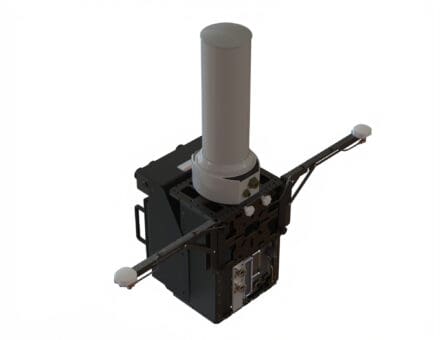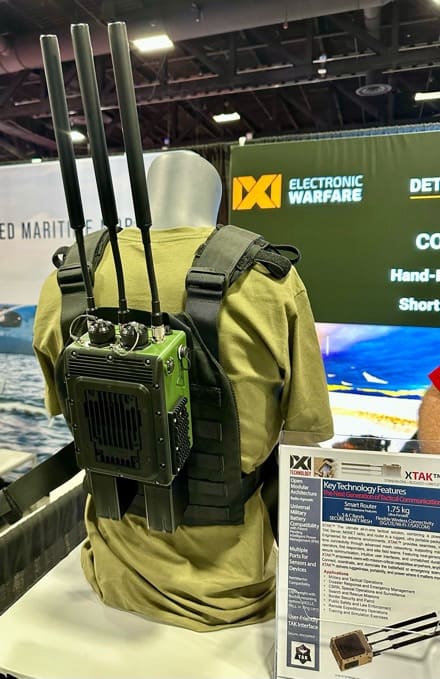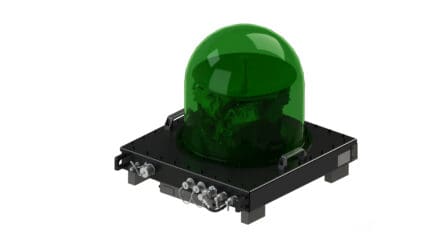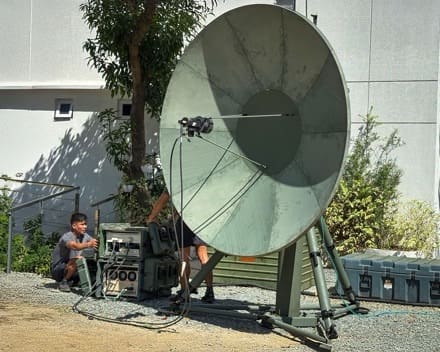
Spectra Group, a specialist provider of secure voice, data and satellite communications systems, has developed in partnership with BATS Wireless antennas a new capability enhancement for Comtech Telecommunications Corp. (Comtech) Troposcatter 10-Watt Compact Over-the-Horizon Mobile Expeditionary Terminals (COMET) called Troposcatter on the Move (TOTM). Since 2024, Spectra Group has global distribution rights for Comtech’s Troposcatter Family of Systems (less the USA, Canada and Mexico which Comtech retains). They have been working in partnership with Comtech and BATS Wireless antennas throughout 2024 to develop the TOTM concept, for which, as the systems integrator Spectra Group has full distribution rights. Spectra Group are launching this new TOTM capability at SOF Week and will be showcasing this and their other strategic communication capabilities in Booth #1805.
The use of the troposphere for communications is not new, but in the past, it was constrained by large dishes and significant power that was not suitable for modern manoeuvre warfare. Comtech’s COMET system revolutionised this capability making it small, lightweight and portable. The COMET system is ideal for providing a secure big data network for deployed headquarters from divisional down to company level or below because it is small, lightweight and due to its low power and directional nature it is also extremely difficult to detect and deny. Critically, it is also satellite independent, can work in a GPS/GNSS denied environment and is proven in the polar regions making it ideal for use during global peer-on-peer conflict and when multi-domain integration is required. However, in the past it did need to be static.
Comtech and Spectra Group recognised the need for increased manoeuvre and large network data on the move, and so, working together with BATS wireless proved the concept of TOTM. Subsequently, Spectra Group working in partnership with BATS Wireless has produced a fully integrated TOTM solution that combines Comtech’s COMET troposcatter with BATS Electronically Steered Antennas (ESAs) into a single fully integrated terminal to deliver an industry first capability. Extensive sea trials successfully tested and validated TOTM scenarios by simulating island hopping in the Florida Keys, Florida Panhandle and off the coast of California. The tests involved ship to shore and ship to ship scenarios proving the concept of TOTM by demonstrating systems tracking and communicating with other nodes while on the move using GPS, but also showcasing the potential for advanced mobile connectivity in challenging environments without reliance on GPS.
TOTM enhances the utility and operational effectiveness of COMET in a littoral manoeuvre context, especially in contested, GPS or satellite denied environments. Its mobility and capacity delivers band- widths of up to 210 Mbps and ranges in excess of 100 Km to support a wide range of mobile applications such as Ship to Ship or Ship to Shore communications, Beyond Line of Sight strategic communications or Wide Area Networks, secure data links for autonomous sensors, control of remote vessels, Intelligence Surveillance and Reconnaissance (ISR) and any other application that requires big data delivered to the front line. The TOTM solution can also be utilized with land vehicles for efficient “at the pause” applications, enabling users to quickly establish Troposcatter communications without having to set up and align antennas, allowing rapid data transmission from positions of opportunity.
Simon Davies, CEO of Spectra Group said: “We pride ourselves at Spectra Group on being able to work in partnership with industry leaders to push the boundaries of what can be achieved using the latest technology to meet the demands of regular and specialist forces in the ever-evolving battlespace.
Our trials have successfully proved the Troposcatter on the Move capability which is a significant enhancement to the existing Troposcatter COMETs utility, especially in the littoral manoeuvre space, and superbly complements the Troposcatter Family of Systems and our award-winning SlingShotTM radio and new GENSS platform which also enables BLOS and COTM for troops deployed in austere locations globally.”
About Spectra Group (UK) Ltd:
Spectra has a proven record of accomplishment – with over 15 years of experience in delivering solutions for governments around the globe; elite militaries; and private enterprises of all sizes. As a dynamic, agile, security accredited organisation, Spectra can leverage this experience to deliver Cyber Advisory and secure Hosted and Managed Solutions on time, to spec and on budget, ensuring compliance with industry standards and best practices. Spectra’s gold-level partnerships with third-party vendors ensure best value and leading-edge technology is used. On 23 November 2017,
Spectra Group (UK) Ltd announced that it had been listed as a Top 100 Government SME Supplier for 2015-2016 by the UK Crown Commercial Services. Spectra Group (US) Inc. was established in 2018 to directly support the US market.
Spectra Group were awarded the 5-year contact to be the UK distributor of Troposcatter COMET for US company Comtech Systems Inc. in October 2023. Comtech is a leading global provider of next-generation 911 emergency systems and critical wireless and satellite communication technologies. Spectra’s CEO, Simon Davies, was awarded 2017 Businessman of the Year by Battlespace magazine.
Spectra was awarded the prestigious Queen’s Award for Enterprise (Innovation) in 2019 for SlingShot. Founded in 2002, the Company is based in Hereford, UK and holds ISO 9001:2015, ISO 27001 and Cyber Essentials Plus accreditation.
www.spectra-group.co.uk























































































































